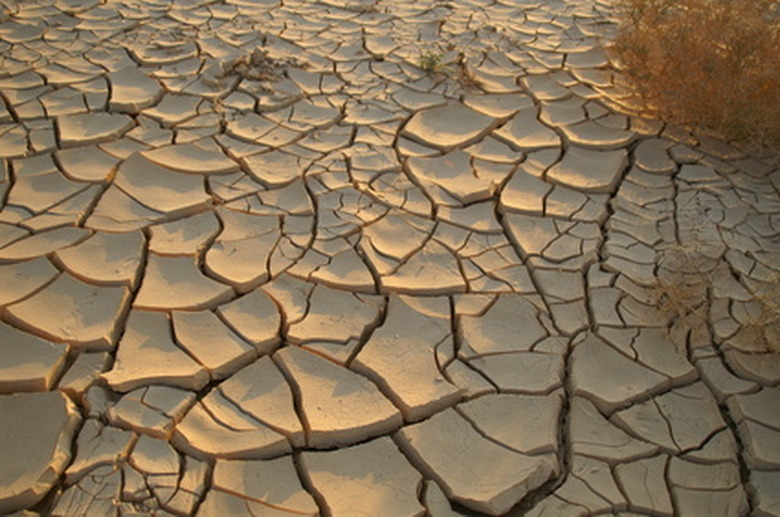What Soil Types Are In Nebraska?
The Nebraska Department of Roads has defined six landscape regions in the state based on various environmental traits. These characteristics include soil types and landforms, as well as hydrological features, climate and types of wildlife. Most soil in Nebraska is composed of loess, which is finer than sand, but coarser than dust or clay. Loess is prone to extensive erosion by wind and water.
Loess Hills
The Loess Hills Region includes rolling plains and hills, stream valleys, tablelands, bluffs, river terraces and floodplains. The soil is silty loess over coarse glacial outwash, which is easily eroded on steep bluffs. The Missouri Valley composed of various combinations of silt, clay and sand, ranges from poorly to well drained. The sand or silt soil along the Platte River is poorly to moderately drained.
- The Nebraska Department of Roads has defined six landscape regions in the state based on various environmental traits.
- Most soil in Nebraska is composed of loess, which is finer than sand, but coarser than dust or clay.
Loess and Glacial Drift
Nearly level to gently rolling plains cover the hilly loess and glaciated plains of the Loess and Glacial Drift Region. Bluffs, river terraces and floodplains lie along the Missouri River, while broad floodplains and scattered sandpits line the Platte River. The soil in the Missouri Valley is a combination of sand, silt and loam, and is poorly drained in some areas. The surrounding loess hills are composed of easily eroded silt, and the glacial till or clay in the hills is exposed and poorly drained. The loess mantle is thinner and contains more clay in the western part of the region.
Central Loess Plains and Rainwater Basins
The Central Loess Plains and Rainwater Basins Region is composed of deep loess soils that erode easily. The south central area of the region consists of nearly level broad plains, while the north central area is rolling hills. Broad flat floodplains line the Platte River and steep slopes with deep drainage gullies lie in the southwestern area of the region. The soils along the north side of the Platte River are deeper and more calcareous than those along the south side.
- Nearly level to gently rolling plains cover the hilly loess and glaciated plains of the Loess and Glacial Drift Region.
- The soil in the Missouri Valley is a combination of sand, silt and loam, and is poorly drained in some areas.
Sandhills
The Sandhill Region is an area of fragile sandy rangeland and sand dunes stabilized by grass. The eastern area of the region consists of sandy plains, wet meadows and marshes. The soil is composed of sand with very little organic matter and is highly susceptible to erosion by wind.
Shale Plains and Tablelands
The soils in the Shale Plains and Tablelands Region include moderately well-drained silt loam north of the Niobarara River and clay soil weathered from shale south of the river. The western area of the region is composed of shallow sand or silt, the southern and eastern area contains mixed loam on sand or gravel, and the uplands are made of weathered sandstone. The region covers broad plains in the western and southern areas, desiccated plains in the central area, and bluffs and escarpments along the river.
High Plains
The High Plains Region is composed of rangeland and cropland, with pine forests, canyons and buttes. The soil is weathered from local sandstone or siltstone in the northwestern area of the region and has the highest shrink to swell ratio in the state. The area along the Platte River is coarse sand or silt, while rocky outcrops line the Pine Ridge and Wildcat Hills. The southern portion of the panhandle area is composed of thin silt loam that erodes easily, but north of the Republican River the silt loam is deeper.
- The Sandhill Region is an area of fragile sandy rangeland and sand dunes stabilized by grass.
- The region covers broad plains in the western and southern areas, desiccated plains in the central area, and bluffs and escarpments along the river.
